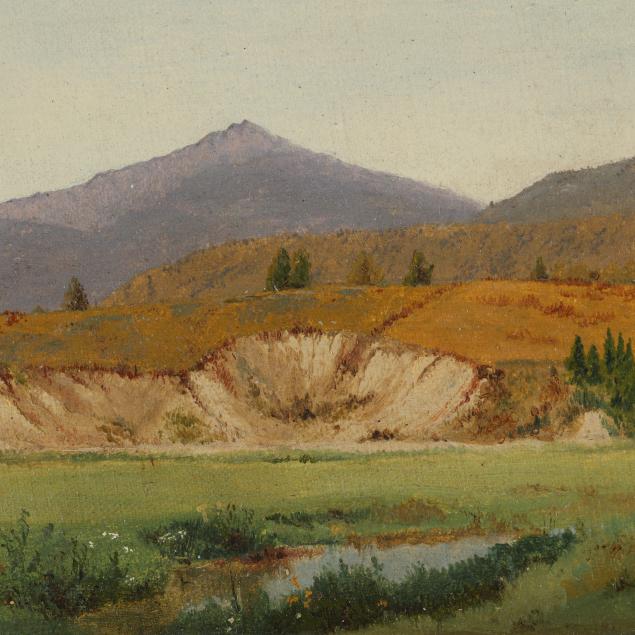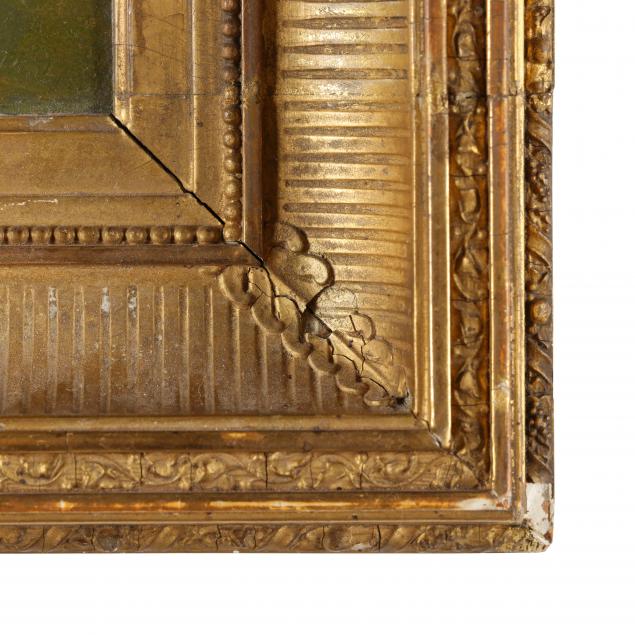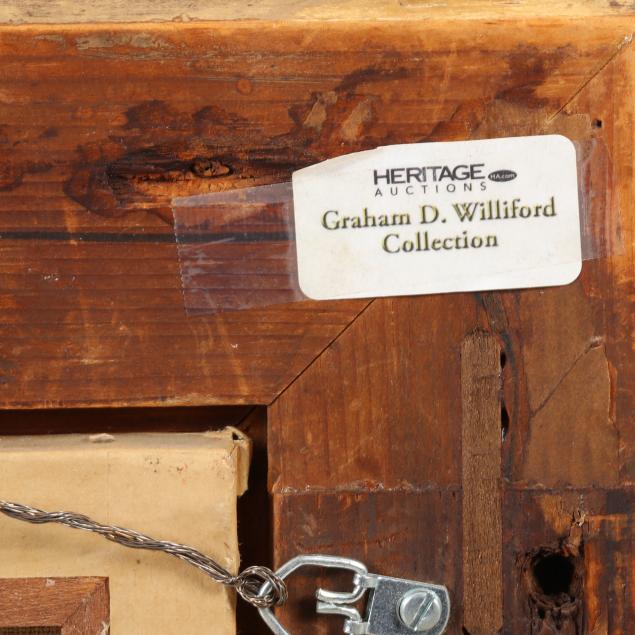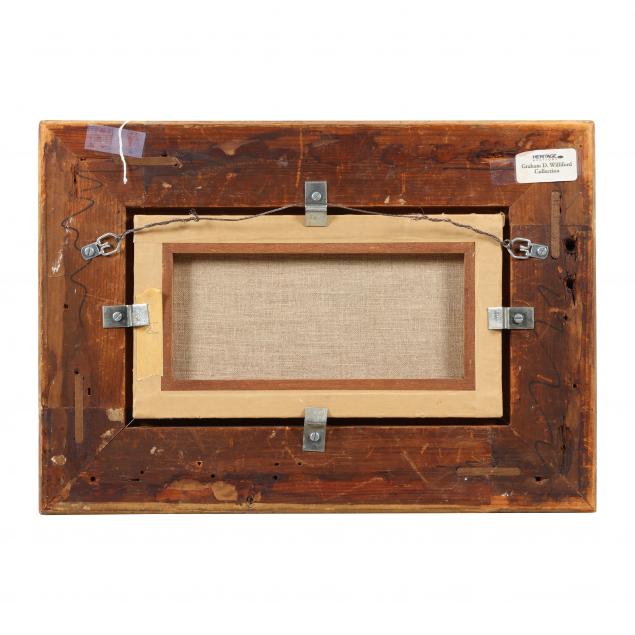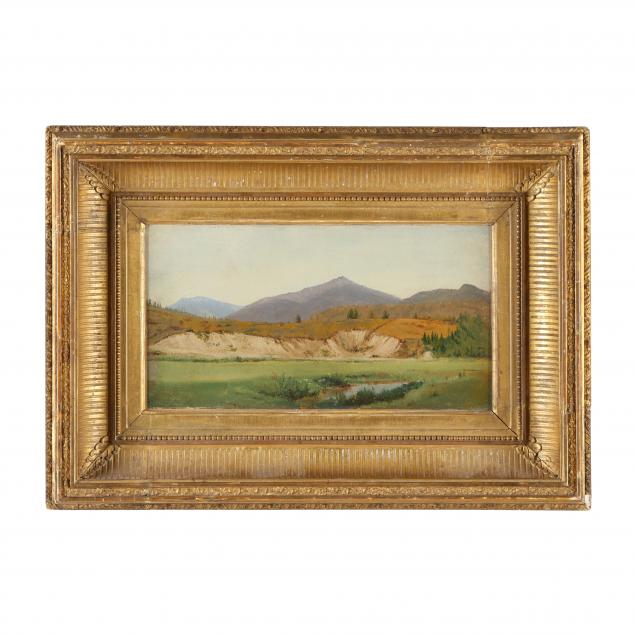
Lot 256
John William Hill (American, 1812-1879), Landscape with Mountains
Explore more items like this one.
Visit our Fine Art Department Fine Art
Lot Details & Additional Photographs
Stretcher size 5 3/4 x 10 5/8 in.; Frame dimensions 11 1/2 x 16 in.
From the Collection of the late Graham Devoe Williford, Fairfield, Texas
Private Collection, Virginia
John William Hill was an English born artist whose family immigrated to America in 1819. His early training was in print-making as an apprentice for his father, John Hill, a talented and sought after engraver. One of Hill's projects included working on The Hudson River Portfolio, a bound portfolio of hand-colored aquatints after watercolors by William Guy Wall. In 1836, Hill was hired as a topographical artist for the New York State Geological Survey. He later worked with the New York based publisher, Smith Brothers & Co., completing watercolor views of American cities for later publication as lithographs.
By the late 1850s, John William Hill was a follower of the aesthetics of John Ruskin and the Pre-Raphaelites. Hill was committed to be true to nature and began working outdoors in broad daylight. His paintings are exquisitely detailed, with almost imperceptible brushstrokes. He was a founding member of the New York Watercolor Society and served as president of the Association for the Advancement of Truth in Art.
Hill exhibited extensively at the National Academy of Design and the Brooklyn Art Association. His paintings are in the collections of the Metropolitan Museum of Art in New York; the Peabody Essex Museum, Salem, Massachusetts; Museum of Fine Arts, Boston; Smithsonian American Art Museum, Washington, D.C.; and many others.
Light over-cleaning; minor chipping to frame.
$1,000 - 2,000

